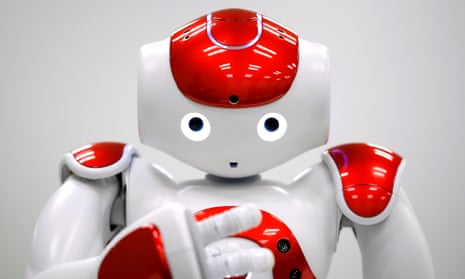When I was a teenager, I had a brief stint in a factory on a summer trip abroad. It was boring, repetitive work. The workers sat on a long bench each performing a small role in assembling some intricate electrical parts. Recently I visited a factory that makes a well-known household brand. There weren’t many people to be seen. The repetitive tasks were performed by robots. Most of the quality control was performed by robots. The brand in question now has as many people involved in marketing the brand as making it.
Automation has changed the role that people play in making and selling the product. Less repetitive work. More time to create differentiating, effective and compelling marketing communications.
One brand we work with has over 950,000 different variations of specific copy that are served to individuals online in a way that is dependent on who they are and what they’re doing. We could not do this manually. Automation does not replace compelling storytelling in order to create demand. It does improve the efficiency of harvesting that demand very significantly.
But does automation threaten creativity?
Whenever I consider this, I come back again and again to the fact that automation basically frees individuals from repetitive time-absorbing tasks thereby leaving them able to create.
Take TV buying. When TV buying started, every spot was an auction. You bid the price you were willing to pay for the spot and hoped that it was enough to represent value for the client, but not so cheap that you’d lose it at the last minute. You could lose your airtime to another advertiser, perhaps to your client’s main competitor. If you lost the spot, you then had to replace it with another, meaning that you might spend the client’s budget two or three times over in one week. This might have been fun in its way (I can remember getting great bargains because I was willing to stay at work negotiating for longer on a Christmas Eve than the rest of the agency world who had gone to the pub at lunchtime) but the change to the current way of working saves time and delivers certainty to the client’s schedule in advance.
Programmatic ad-buying, when it becomes mainstream, will save even more time, deliver a more accurately targeted schedule, and release administrative man hours than can be used instead to drive thinking about better ways to cut through clutter and outsmart the competition.
I asked MediaCom’s head of planning Steve Gladdis – a man at the cutting edge of both creativity and innovation – how worried he was about being replaced by a robot. He said: “I think the two [data and creativity] will always go hand-in-hand. Data interpreted as insight can obviously inform creativity. You can also use data to inform which of a number of creative routes is likely to have the best impact based on a limited test. Programmatic helps you put great creativity in front of the right person at the right time, and you can tailor that great creative work to the viewer.”
I share his optimism. The power of big data to improve the way we reach the target consumer at the right time and in the right way is well documented. But robots alone won’t give us the ability to win over hearts and minds.
Consider your Amazon recommendations. I’ve been shopping at Amazon since day one. Of the top 10 current recommendations it has for me, I’d say: “Not interested, nope, nope, nope, nope, will order, got it, nope, nope, got it”. And that’s probably the algorithm doing pretty well. But not as well as the bloke in Daunt Books in South End Green would if I told him my specific preferences. And Amazon has a lot more data about me.
Traffic update-informed satnav still adds about 20 minutes to a 40-minute journey because it isn’t as good at London back-street cut throughs as I am. It is likely that robots are going to learn to learn, they’re going to become smarter. But there is still plenty of room for this as far as I am concerned.
Now consider your favourite advertising. We can all list some epic, emotive, spine-tingling ads that have moulded our view of a brand or of an issue. We know robots didn’t inform those campaigns. The insights came from people’s real experiences. From gut feelinglnot from an algorithm. I ask every planner to do some method insight – our name for walking for a few hours in the target consumer’s shoes. Only then, by digging deep into the truth of people’s experience, can data inform, endorse and enhance an idea.
Don’t get me wrong. I’d like a few more robots round the house and welcome them with open arms in the office. They’re going to free up our creativity not smash it.
Sue Unerman is the chief strategy officer at MediaCom
To get weekly news analysis, job alerts and event notifications direct to your inbox, sign up free for Media Network membership.
All Guardian Media Network content is editorially independent except for pieces labelled ‘Advertisement feature’. Find out more here.

Comments (…)
Sign in or create your Guardian account to join the discussion